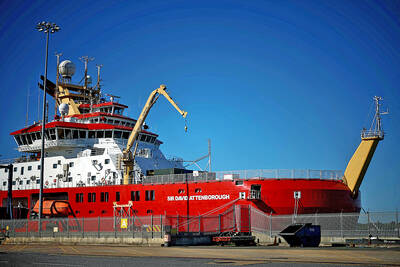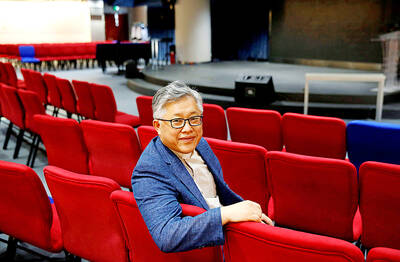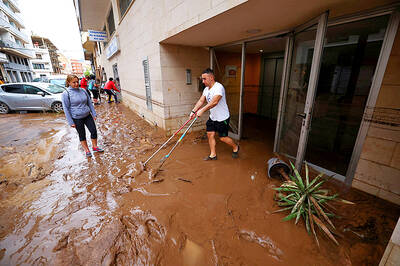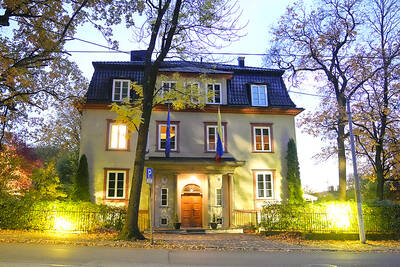Germany? environment ministry on Wednesday took aim at a controversial experiment to see whether the ocean can be primed to become a sponge for soaking up dangerous greenhouse gases.
The geo-engineering scheme ?bitterly attacked by environmentalists ?is being conducted by a joint German-Indian research team aboard a German vessel who say they are not breaking any rules or damaging the ecosystem.
The scientists aim to discharge 6 tonnes of iron sulphate in the south Atlantic to find out how this affects microscopic marine plants on the ocean surface.
Proponents believe iron nutrition will cause this phytoplankton to grow explosively and thus absorb more atmospheric carbon dioxide, the principal greenhouse gas, as a result of photosynthesis.
It could become an invaluable buffer against global warming, they argue.
CATASTROPHIC
Opponents, though, say the consequences of wide-scale iron fertilization could be catastrophic. They fear it could cause the sea to become more acidic or trigger algal blooms that would de-oxygenate swathes of the ocean.
Environment ministry spokesman Matthias Machnig said on Wednesday that the ministry had asked the German research ministry to ?mmediately halt?the experiment.
The test runs counter to a global moratorium on ocean fertilization established under the UN Convention on Biological Diversity (CBD), Machnig said.
The regional daily the Maerkische Allgemeine reported that German Environment Minister Sigmar Gabriel had also written to Research Minister Annette Schavan, saying the experiment ?estroys Germany? credibility and its vanguard role in protecting biodiversity.?br />
However, the research ministry told Agence France-Presse that it believed the German institute in question, the Alfred Wegener Institute (AWI), ?ad prior agreement with the environment ministry?for carrying out the experiment.
EXPERIMENT
The iron-sowing expedition, named LOHAFEX, comprises 48 scientists, 30 of them from India? National Institute of Oceanography (NIO), aboard the research ship Polarstern.
The team set sail from Cape Town on Jan. 7 and after two weeks will arrive in a target zone where the dissolved iron will be discharged over a patch of 300km? The zone has not been identified. After research, the ship will dock in Punta Arenas, Chile, on March 17.
In a press statement, the Bremerhaven-based AWI said that the experiment ?s in accordance?with the provisions of the CBD and the London Convention on ocean fertilization ?hat call for further research to enhance understanding of ocean iron fertilization.?br />
Planning for the experiment began in 2005 and the scheme was part of a memorandum of understanding between the AWI and NIO that the two institutes signed during a trip to New Delhi in October 2007 by German Chancellor Angela Merkel, the statement said.
?he size of the fertilized patch is considerably smaller than the impact of melting icebergs that may leave a swathe of several hundred kilometers breadth of enhanced iron concentrations,?AWI said.
?OHAFEX will contribute legitimate and much-needed scientific research to the controversial discussions on ocean fertilization,?it said.
Once written off as irresponsible or madcap, geo-engineering schemes are getting a closer hearing in the absence of political progress to roll back the greenhouse gas problem.
FLOATING MIRRORS
Other, far less advanced, projects include sowing sulphur particles in the stratosphere to reflect solar radiation and erecting mirrors in orbit that would deflect sunrays and thus slightly cool the planet.
Green groups are concerned by these projects and say they could cause more problems than they resolve. They also say these schemes?financial cost is unknown, but possibly far more than the bill for reducing emissions that cause the problem.
?his case clearly shows why we need strong, enforceable rules to prevent rogue geo-engineers from unilaterally tinkering with the planet,?said Jim Thomas of the ETC Group, an environmental watchdog based in Montreal, Canada.

STEPPING UP: Diminished US polar science presence mean opportunities for the UK and other countries, although China or Russia might also fill that gap, a researcher said The UK’s flagship polar research vessel is to head to Antarctica next week to help advance dozens of climate change-linked science projects, as Western nations spearhead studies there while the US withdraws. The RRS Sir David Attenborough, a state-of-the-art ship named after the renowned British naturalist, would aid research on everything from “hunting underwater tsunamis” to tracking glacier melt and whale populations. Operated by the British Antarctic Survey (BAS), the country’s polar research institute, the 15,000-tonne icebreaker — boasting a helipad, and various laboratories and gadgetry — is pivotal to the UK’s efforts to assess climate change’s impact there. “The saying goes

Police in China detained dozens of pastors of one of its largest underground churches over the weekend, a church spokesperson and relatives said, in the biggest crackdown on Christians since 2018. The detentions, which come amid renewed China-US tensions after Beijing dramatically expanded rare earth export controls last week, drew condemnation from US Secretary of State Marco Rubio, who on Sunday called for the immediate release of the pastors. Pastor Jin Mingri (金明日), founder of Zion Church, an unofficial “house church” not sanctioned by the Chinese government, was detained at his home in the southern city of Beihai on Friday evening, said

Floods on Sunday trapped people in vehicles and homes in Spain as torrential rain drenched the northeastern Catalonia region, a day after downpours unleashed travel chaos on the Mediterranean island of Ibiza. Local media shared videos of roaring torrents of brown water tearing through streets and submerging vehicles. National weather agency AEMET decreed the highest red alert in the province of Tarragona, warning of 180mm of rain in 12 hours in the Ebro River delta. Catalan fire service spokesman Oriol Corbella told reporters people had been caught by surprise, with people trapped “inside vehicles, in buildings, on ground floors.” Santa Barbara Mayor Josep Lluis

The Venezuelan government on Monday said that it would close its embassies in Norway and Australia, and open new ones in Burkina Faso and Zimbabwe in a restructuring of its foreign service, after weeks of growing tensions with the US. The closures are part of the “strategic reassignation of resources,” Venezueland President Nicolas Maduro’s government said in a statement, adding that consular services to Venezuelans in Norway and Australia would be provided by diplomatic missions, with details to be shared in the coming days. The Norwegian Ministry of Foreign Affairs said that it had received notice of the embassy closure, but no